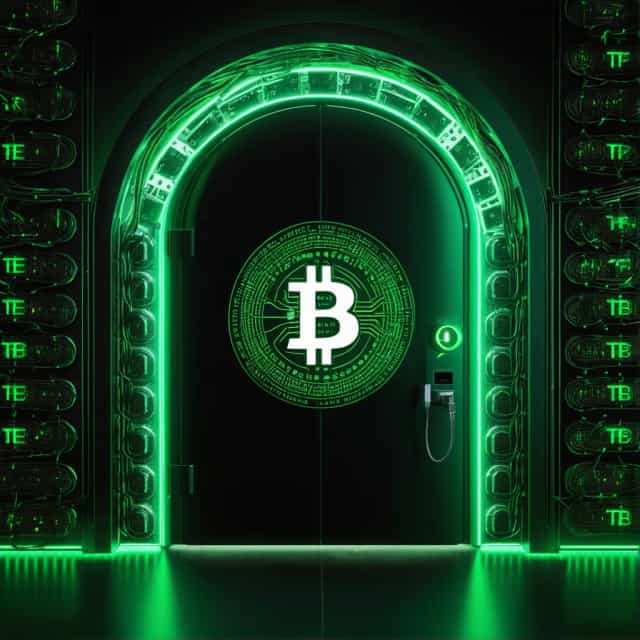
출처: Block Media
Monad: A Transformative Force in the Layer 1 Blockchain Ecosystem
Monad is redefining the Layer 1 blockchain landscape with its dual promise of “high performance + full EVM compatibility.” Equipped with over $240 million in cumulative funding and poised for a mainnet launch by the end of 2025, Monad challenges the conventional belief that compatibility and performance cannot coexist in public blockchains. Its innovative Optimistic Parallel EVM architecture serves as a cornerstone for this revolution, aiming to combine speed, scalability, and developer accessibility.
By utilizing the MonadBFT consensus mechanism and parallel EVM architecture, Monad reports single-round finality within 0.8–1 second and the parallel execution of 70–80% of transactions. Early tests indicate promising results, though these benchmarks are yet to be validated under real-world, complex scenarios following the mainnet launch. Notably, Monad has demonstrated a block creation interval of just 0.5 seconds on its testnet, emphasizing its potential as a high-performance network.
In a crowded Layer 1 landscape, Monad's independent structure, native EVM compatibility, and significant funding distinguish it from competitors. By embedding its architecture directly into the native Layer 1 structure, Monad provides Ethereum developers with a seamless, low-latency environment optimized for performance without sacrificing compatibility. Leveraging this foundation, Monad positions itself as a leading innovator in blockchain infrastructure.
A Thriving Ecosystem Built for Long-Term Growth
Monad's burgeoning ecosystem comprises over 280 participating projects with collective backing of $1.32 billion in funding. Early ecosystem development relies heavily on hackathons and accelerator programs designed to incentivize developers and attract pioneering projects. Investments primarily focus on DeFi infrastructure and core applications, reflecting Monad's emphasis on areas critical to blockchain utility and adoption.
Monad’s “Builders First” strategy underscores its commitment to empowering developers, who are central to the ecosystem's expansion. Despite challenges related to mainnet rollout timelines and decentralizing its validator network, the platform’s proactive engagement with early adopters creates a fertile environment for innovation. The true measure of Monad’s success will hinge on its ability to deliver promised performance metrics while driving meaningful user adoption at scale.
Bridging Performance and Compatibility: Monad’s Strategic Positioning
Aiming to Solve Blockchain’s Key Tradeoff
The Layer 1 blockchain ecosystem has long struggled with the “performance versus compatibility” tradeoff. Ethereum grew into a foundational ecosystem through its EVM compatibility but faced critical bottlenecks in scalability and transaction costs as demand surged. Conversely, Solana delivered groundbreaking TPS rates, branding itself as a "high-performance public chain," yet fractured trust with issues tied to decentralization and technical reliability.
Monad enters the market determined to reconcile these competing narratives. Its mission is to harmonize industry-leading performance with full EVM compatibility, leveraging a low-level architectural overhaul. By maintaining native Ethereum EVM compatibility, Monad enables developers to migrate existing applications without modification while delivering low-cost, low-latency transaction environments for users.
Tackling Ethereum’s Shortcomings
The explosion of blockchain use cases such as DeFi, NFTs, and GameFi has illuminated key inefficiencies in Ethereum’s architecture. During the bull market of 2021, Ethereum Gas fees for NFT trades on OpenSea soared to $196 per transaction, deterring casual users. Periods of network congestion similarly resulted in frequent transaction failures and delays for DeFi participants.
While Layer 2 solutions offer partial relief, they cannot fully eliminate challenges like cross-chain transaction inefficiencies and the overhead costs of bridging assets to Layer 2 networks. Monad’s architecture aims to address these limitations at the Layer 1 level, optimizing performance and scalability without compromising decentralization. Its team of blockchain veterans—many responsible for key protocol advancements in Ethereum and Solana—has re-engineered infrastructure to merge speed, usability, and reliability.
Building a Universal Blockchain Solution
Monad envisions transcending incremental improvements to become a universal blockchain platform. Its ambitious performance benchmarks include achieving 10,000 TPS, transaction finality within one second, and average costs below $0.01. These capabilities would unlock high-frequency use cases such as real-time gaming, data-heavy applications, and instantaneous financial transactions—areas currently limited by existing Layer 1 and Layer 2 technologies.
The platform’s appeal also extends to developers within the Ethereum ecosystem. Monad’s deep compatibility ensures projects can migrate effortlessly, while its distributed validator mechanisms maintain decentralization, allowing even smaller nodes to contribute. At scale, Monad’s vision encompasses transforming blockchain into an integral element of industries like finance, logistics, healthcare, and media by driving mass adoption and fostering digital transformation.
Milestones Driving Monad’s Momentum
Monad’s rapid ascendancy is propelled by a robust combination of funding, technical ingenuity, and team expertise. Key milestones include:
-
Funding Achievements: Monad raised $19 million in seed financing led by Dragonfly Capital in 2023 and followed this with a $225 million Series A round spearheaded by Paradigm in 2024. Major investors like Coinbase Ventures and Electric Capital have also contributed to its funding pool, validating Monad’s attractiveness as a strategic player. These resources have enabled development milestones, team expansion, and ecosystem investments critical to Monad’s growth trajectory.
-
Team Expertise: Monad’s team includes top-tier professionals from Jump Trading and Goldman Sachs, blending expertise in distributed systems design and performance optimization for low-latency transactional environments. Additionally, key technical contributors have played significant roles in advancing both Ethereum’s core protocols and Solana’s execution layers, giving Monad an edge in building cutting-edge blockchain systems.
-
Technical Validation: Demonstrations on the Monad testnet showcase impressive metrics: a TPS exceeding 5,200, over 334 million RPC requests processed within 12 hours, and total on-chain addresses exceeding 300 million. These results affirm the feasibility and performance of Monad’s core innovations, including its parallel EVM execution layer and MonadBFT consensus mechanism.
These achievements collectively position Monad as a leading contender in the highly competitive Layer 1 blockchain space, highlighting its strategic advantages over existing solutions.
Overcoming Challenges and Paving the Way Forward
While Monad faces challenges characteristic of emerging projects, such hurdles often serve as opportunities for refinement and growth. Key uncertainties include mainnet rollout timing, user acquisition dynamics post-launch, and the efficiency of capital allocation in scaling operations. Continued testnet activity will shed light on Monad’s readiness for real-world applications and provide data essential to closing these gaps.
Community sentiment closely tracks the trajectory of Monad’s progress, with questions often arising about its ability to meet substantial expectations. However, this phase of scrutiny is standard for major disruptors in the blockchain industry. As the mainnet launch approaches, critical indicators such as technology validation, decentralization measures, and ecosystem growth will be pivotal in determining whether Monad can sustain its competitive edge and fulfill its ambitious vision.
Future evaluations will explore Monad’s technical structure in greater depth, investigate its differentiation within the Layer 1 market, and assess its capacity for community and developer engagement—all crucial to mapping its long-term potential and impact in the blockchain sector.










